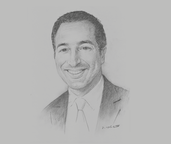Othman El Ferdaous, Secretary of State for Investment, Ministry of Industry, Investment, Trade and Digital Economy: Interview

Interview: Othman El Ferdaous
What is being done to attract foreign investment?
OTHMAN EL FERDAOUS: The inflow of foreign direct investment (FDI) in Morocco is similar in scale to that of Tunisia, and South-eastern European countries like Bulgaria and Romania, meaning that it has oscillated between 2.5% and 3.5% of GDP since 2008. FDI outflows experienced strong momentum in 2017 with more than Dh9bn (€809.5m) invested mainly in Africa, and increased further by 63% in 2018. This dynamism reflects the position of Morocco in the growing market of the ECOWAS region, which estimates approximately 800m inhabitants by 2030.
To ensure that FDI maintains 3.5% of GDP, the country has undertaken major structural reforms. On the hardware side, the reform of the Regional Centre for Investment, which, coupled with the advanced deconcentration and regionalisation charter, will allow the introduction of more subsidiarity so that the procedures and decisions are carried out closer to the field and reality of investors. On the software side, Morocco has crowd-sourced the overhauling of its current investment code which dates back to 1995. Traditional priority sectors such as agriculture, tourism and real estate will now be joined by industry, digital economy and entrepreneurship.
How competitive is Morocco on a global scale?
EL FERDAOUS: Morocco offers investors attractive scale effects and volumes. Largely thanks to its access to a market of 1.2bn consumers who account for 60% of global GDP, the country has positioned itself as the interface for the European, American and African markets. In particular, the potential for increasing industrial FDI in Morocco is significant; the kingdom is already producing more cars than South Africa. In 2017 more than 85% of the jobs offered in the automotive sector were permanent contracts that paid between Dh4000 (€359) and Dh8000 (€719). Between 2000 and 2015 the share of low-tech products of total exports contracted by 23%, while that of high- and medium-tech products grew by 31%. There are approximately 10,000 employees in research and development in Moroccan companies, and it is expected that this figure will have multiplied by a factor of six by 2030. To consolidate these strengths we will have to further encourage the availability, standardisation and security of public and private data exchanges, with the objective of boosting the emergence of new economic models.
What are some of the projects that have been prioritised by the Agency for Digital Development?
EL FERDAOUS: In the end of its structuring phase, the Agency for Digital Development began recruitment efforts to form an agile team to support central and territorial public administrations. There are 15 prioritized projects that have been approved by the board of directors, including the launch of an AI ecosystem and applied research program, which cuts bureaucratic processing times by easing communication between various ministries and administrative services.
How would you characterise the impact of advanced technology on the economy?
EL FERDAOUS: Important societal developments are taking place in the country. Electronic payments, for instance, exceeded payments by cheque for the first time in 2018. Smartphone penetration in rural areas already exceeds 55%. Moreover, 11 agreements for mobile payment methods were approved with the launch of interoperability in November 2018. In terms of technological developments, those that will have the most significant impact on the future of Morocco are related to the storage of electricity and the intelligent management of energy networks. Sustainable mobility will also play an important role since transport is the largest carbon contributor, accounting for 23% of emissions. If 10% of the car fleet is electric by 2030, it will reduce carbon dioxide emissions by 30m tonnes.
You have reached the limit of premium articles you can view for free.
Choose from the options below to purchase print or digital editions of our Reports. You can also purchase a website subscription giving you unlimited access to all of our Reports online for 12 months.
If you have already purchased this Report or have a website subscription, please login to continue.

